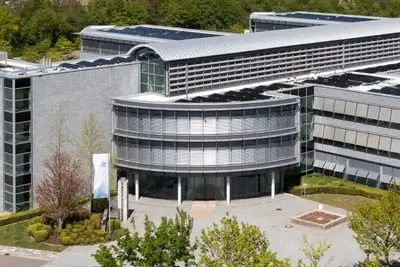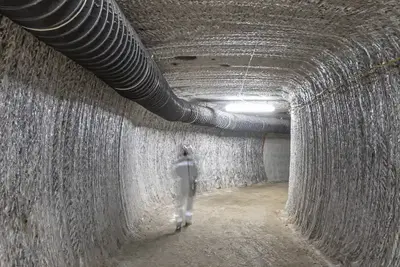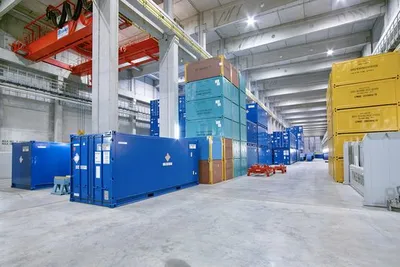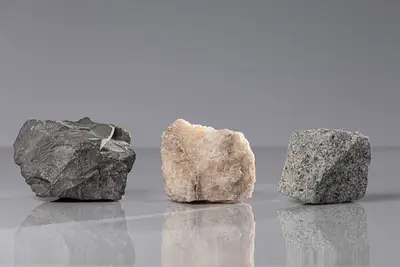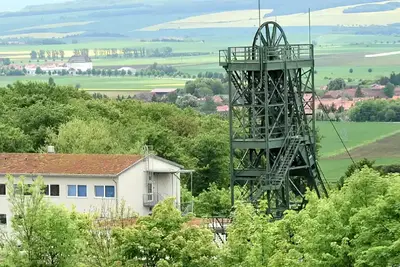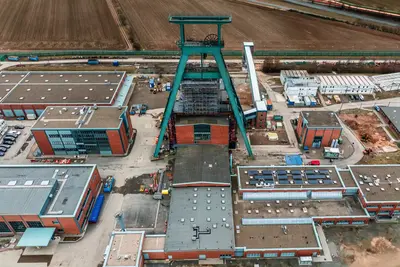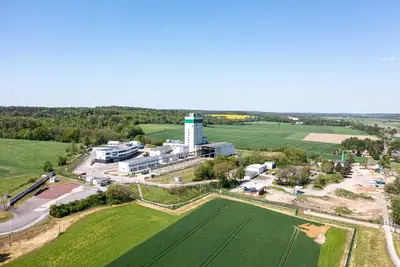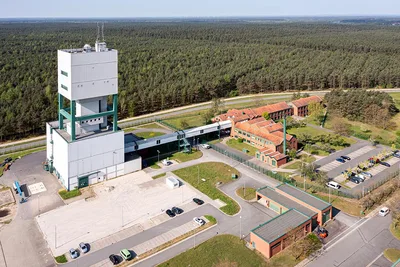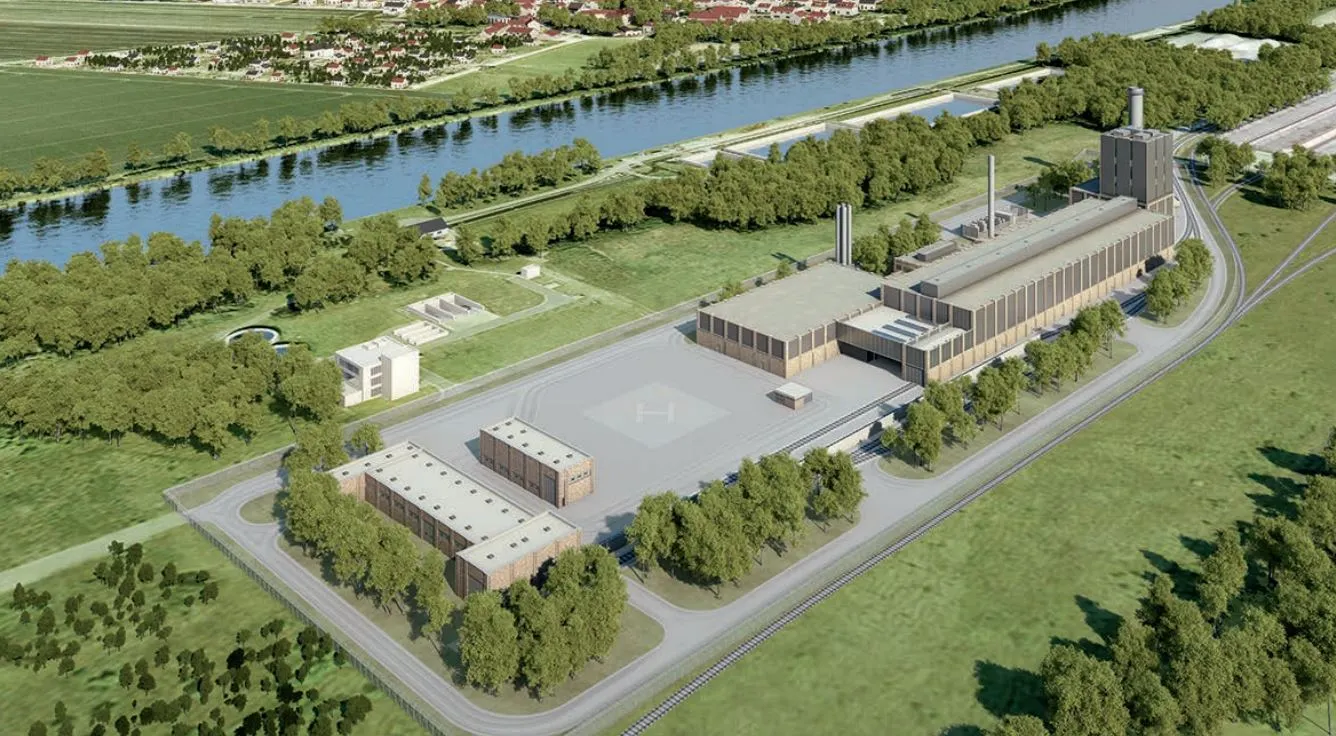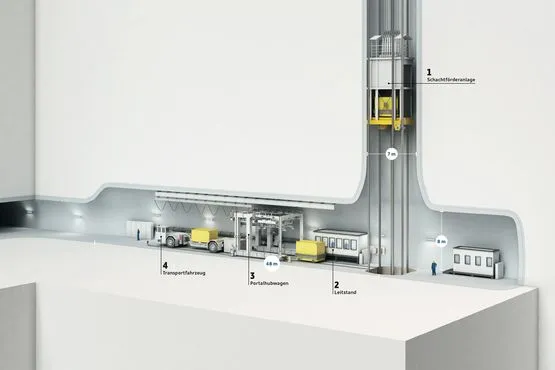
Konrad repository
At the Konrad mine in Salzgitter, Lower Saxony, work is underway on the construction of Germany’s first repository for low- and intermediate-level radioactive waste to be licensed under nuclear law. This former iron ore mine is being converted for this purpose under the supervision of the Bundesgesellschaft für Endlagerung mbH (BGE).
The final disposal of up to 303,000 cubic metres of low- and intermediate-level radioactive waste is set to begin in the early 2030s. The emplaced containers will be immobilised with suitable concrete and securely sealed off during emplacement operations. Once operations are complete, all cavities of the mine will be backfilled and sealed in a manner that ensures long-term safety.
On this page:
From 1964 onward, miners extracted iron ore via the Konrad 1 and 2 shafts. This extraction was discontinued for economic reasons in 1976. The same year, investigations began with a view to determining whether the Konrad mine was suitable for use as a repository for low- and intermediate-level radioactive waste. Scientific analyses of the geology indicate that this is the case: for example, thick layers of clay prevent the ingress of water – and therefore also the escape of radioactive substances for a long period of time.
Konrad repository explained in 90 seconds (english subtitle)
By calling up the video, you agree that your data will be transmitted to YouTube.
More information
History of the Konrad repository Actors and tasks Licensing of the Konrad repository Main topic: Completion of the Konrad repository Main topic: Evaluation of the safety requirements for the Konrad repositoryInformation centre
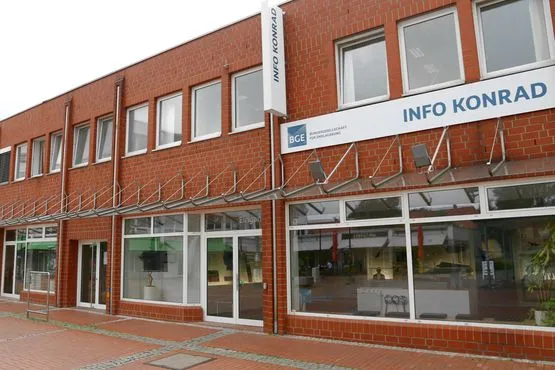
The Konrad information centre informs interested parties about projects and ongoing processes related to the Konrad repository. It offers exhibitions, lectures and multimedia applications as well as access to the planned repository. Visiting the information centre and mine tours are free of charge.
Review and adjustment
In 2002, the Lower Saxony Ministry for the Environment gave its approval for the Konrad repository in the form of a “planning approval decision”. Following multiple legal proceedings, this licence was confirmed by the Federal Administrative Court in 2007. Since then, there have been constant advances in science and technology, and the BGE has therefore commissioned external contractors to review whether the safety-relevant requirements are still in line with the state of the art. The insights obtained will be incorporated into planning and the construction of the repository. In the course of the analyses, the experts have already identified a number of areas that are in need of adjustment, some of which are deemed to be relevant to the safety of the repository. However, no fundamental safety deficiencies were identified.
The conversion of the former iron-ore mine is an elaborate process. For example, the two shafts must be renovated and equipped with the necessary infrastructure underground. Among other things, this infrastructure includes transport galleries and the emplacement areas at a depth of around 850 metres. Above ground, construction work is underway on new buildings. These include a reloading hall, where the waste containers of low- and intermediate-level radioactive waste with low heat generation will subsequently be delivered and prepared for transport underground.
Origin of radioactive waste
Around two thirds of the radioactive waste destined for the Konrad repository originates from nuclear power plants and industrial nuclear facilities. In addition, the repository is also intended to accommodate materials from the dismantling of GDR nuclear power plants as well as waste from federal research establishments.
At present, the earmarked radioactive waste is still stored above-ground in interim storage facilities and at state collection points. From there, it will subsequently be transported to the Konrad repository with suitable packaging for final disposal.
Brief information on the Konrad repository
- The Konrad mine is Germany’s first repository for low- and intermediate-level radioactive waste to be licensed under nuclear law
- The repository is due to be completed in the early 2030s and will provide space for up to 303,000 cubic metres of nuclear waste
- The radioactive waste originates mainly from nuclear power plants and the nuclear industry
- At present, the radioactive waste earmarked for Konrad is still stored above-ground in interim storage facilities and at state collection points

